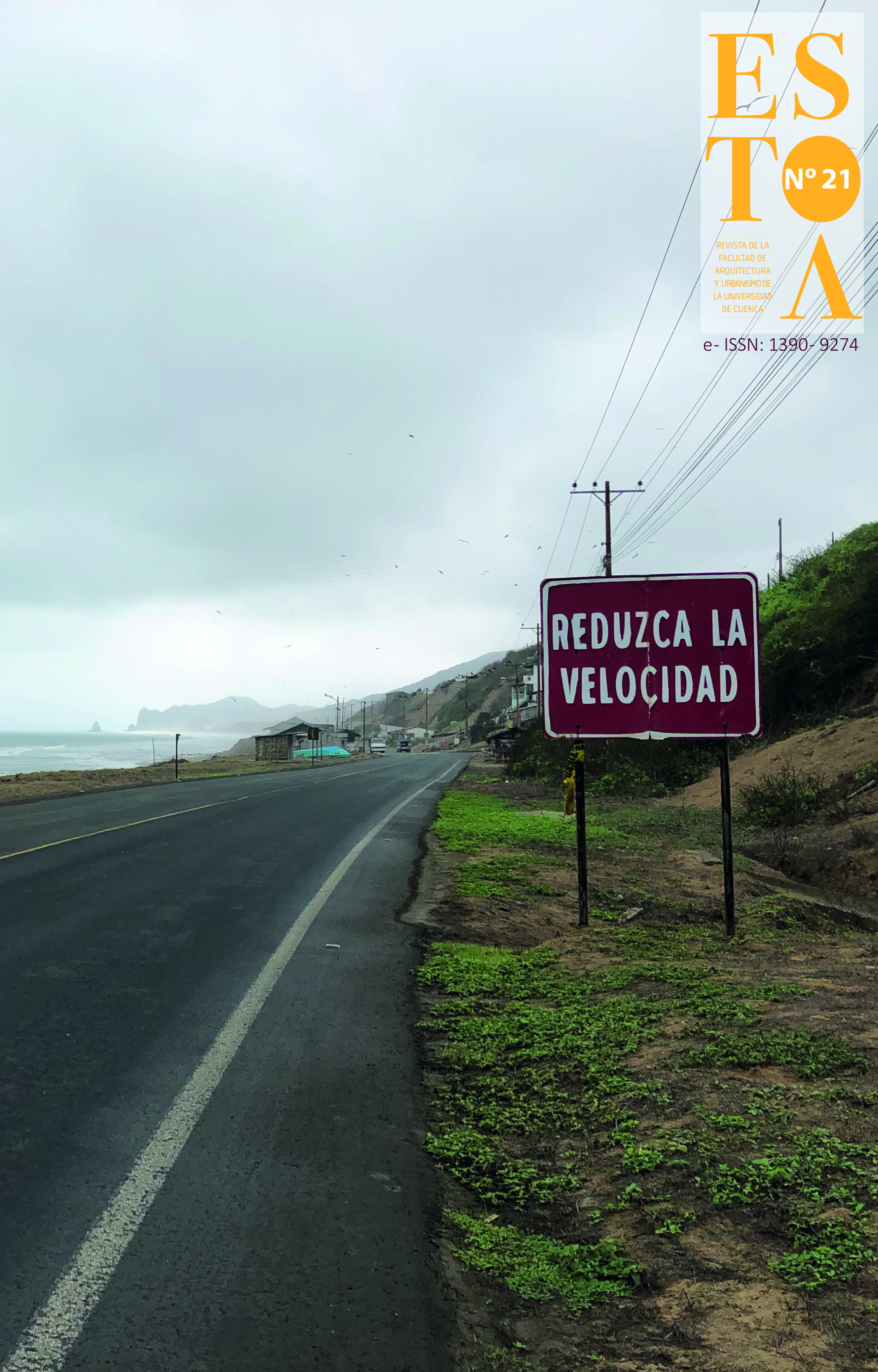Glycerol as earthen coatings stabilizer
DOI:
https://doi.org/10.18537/est.v011.n021.a05Keywords:
Sustainability, bioconstruction, moisture, plastersAbstract
Recently there has been a significant increase in the generation of glycerol, which is a by-product of several industrial processes and which, due to its binding qualities, has potential for use in the application of earth coatings to improve its resistance and durability. This article documents a series of comparative analyzes of natural earth mortars and others stabilized with glycerol that characterize the cohesiveness, amount of mixing water required and resistance to water damage by capillary absorption and weathering, which are the factors that mostly affect plasters. It was possible to verify an increase in the toughness of the stabilized mortars, a decrease in the amount of liquid needed to mix and an adequate resistance to absorption both in the laboratory and in samples exposed to the elements. Glycerol proved to be an economically and ecologically sustainable resource for improving earth plasters.
Downloads
References
Ávila, E. y Guerrero, L. (2018). El mucílago de Opuntia Ficus como estabilizante en recubrimientos de tierra. En Memorias del SIACOT 2018 (pp.115-126). PROTERRA.
Betancourt, C., de Melo Prado, R., Castellanos, L. y Silva, C. (2016). Características de la glicerina generada en la producción de biodiesel, aplicaciones generales y su uso en el suelo. Ediciones INCA, Instituto Nacional de Ciencias Agrícolas.
Cerro, M. y Baruch, T. (2011). Enduits terre & leur décor, mode d’emploi. Eytolles.
García, J. R., Guerrero, L. y Morales, G. (2020). Análisis y evaluación del comportamiento térmico de un sistema bioconstructivo de tierra cruda aplicado en prototipos experimentales. En J. De Hoyos, et. al. (Comp.). Bioconstrucción para la vivienda, pensamientos y técnicas (pp.73-92). Universidad Autónoma del Estado de México.
Guerrero, L. (2015). Recubrimientos de tierra compactada para la conservación del patrimonio arqueológico de México y el Salvador. En Memorias del SIACOT 2015 (pp. 233-244). PROTERRA.
Guerrero, L. (2016). El papel de la humedad y la compactación en la elaboración de recubrimientos de tierra. Construcción con tierra, (7), 11-22.
Guerrero, L. (2019). Introducción en L. Guerrero, (Comp.) Bioconstrucción a detalle (pp. 5-11). IBOMEX-Carteles Editores.
Guerrero L. y Ávila, E. (2019). Pañetes de tierra estabilizada con nopal. Revista Nodo, 14(27), 53-62.
Kita, Y., Daneels, A. y Romo De Vivar, A. (2013). Chemical analysis to identify organic compounds in pre-Colombian monumental earthen architecture. TOJSAT, 3 (1), 39-45.
Lafuente, G. (2017). Glicerol: Síntesis y Aplicaciones. UNED Facultad de Ciencias.
Mattone, M., Ibnoussina, M., Rescic, S., Fratini, F., Magrini, D., Mecchi, A. M., y Nocairi, M. (2016). Stabilization of earthen plasters: Exchange of knowledge and experiences between Italy and Morocco. Journal of Materials and Environmental Science, 7 (10), 3647–3655.
Mattone, M., Rescic, S., Fratini, F., y Manganelli, R. (2017). Experimentation of Earth-Gypsum Plasters for the Conservation of Earthen Constructions. International Journal of Architectural Heritage Conservation, Analysis, and Restoration, 11(6), 763-772.
Minke, G. (2005). Manual de construcción en tierra. Fin de Siglo.
Minke, G. (2013). Revoques de barro, mezclas, aplicaciones y tratamientos. Icaria editorial.
Normal 11/85 (1985). Assorbimento d’acqua per capillarità – Coeficiente di assorbimento capillare. CNRICR.
Pérez, A., Guerrero, L., González, J. y Prado, R. (2017). Nopal mucilage as hydration agent for quicklime; extraction methods, Ge-conservacion, (11), 189-195.
Pérez, N. (2009). Formulación de un mortero de inyección con mucílago de nopal para restauración de pintura mural. [tesis de maestría, Instituto Tecnológico y de Estudios Superiores de Occidente].
Pérez, N. (2016). Los adobes arqueológicos de la Gran pirámide de Cholula. [tesis doctoral, UNAM].
Stazi, F., Nacci, A., Tittarelli, F., Pasqualini, E., y Munafò, P. (2016). An experimental study on earthen plasters for earthen building protection: The effect of different admixtures and surface treatments. Journal of Cultural Heritage, (17), 27–41.
Torres, P., Cruz, S., Flores, S., Peña, N., Fernández, S., Rodríguez, M. y Cruz, A. (2015). La baba y el mucílago de nopal, una alternativa natural para la conservación de acabados arquitectónicos de tierra. Revista Interdisciplinaria, INAH, (99), 93-114.
UNE-EN-16302 (2016). Conservación del patrimonio cultural. Métodos de ensayo. Medición de la absorción de agua por el método de la pipeta. Aenor. https:// www.une.org/encuentra-tu-norma/busca-tu-norma/ norma?c=N0056787
Vitruvio, M. L. (1986). Los diez libros de la arquitectura. Iberia.
Published
How to Cite
Issue
Section
License
Copyright (c) 2022 Estoa. Revista de la Facultad de Arquitectura y Urbanismo

This work is licensed under a Creative Commons Attribution-NonCommercial-ShareAlike 4.0 International License.
The Journal declines any responsibility for possible conflicts derived from the authorship of the works that are published in it.
The University of Cuenca in Ecuador conserves the patrimonial rights (copyright) of the published works and will favor the reuse of the same ones, these can be: copy, use, diffuse, transmit and expose publicly.
Unless otherwise indicated, all contents of the electronic edition are distributed under a Creative Commons Attribution-NonCommercial-ShareAlike 4.0 International License.




